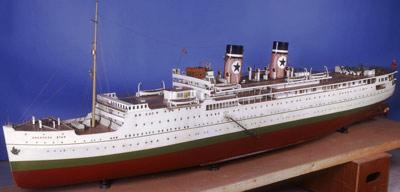Maritime tales - tragedy of the Arandora Star

To me, Stephen Guy, the sinking of the Arandora Star was one of the great ironies of the Second World War because of the nature of the tragedy. The Arandora Star was taking hundreds of internees and prisoners of war to Canada when she was torpedoed and sunk by a German U-boat with the loss of more than 800 lives.
The modified passenger liner had left Liverpool in July 1940 with more than 400 German and 700 Italian internees and 86 German prisoners of war, guarded by 200 troops. Some of the internees, all of whom were civilians, had previously been held in the internment camp at Huyton, near Liverpool. Internees were mostly citizens of enemy countries who were living in Britain at the start of the war.
Their deportation to Canadian internment camps was ordered by the British Government due to heightened invasion fears following the fall of France and the evacuation of the British army from Dunkirk.
At 6.45 am on 2 July the 15,500-ton Arandora Star was torpedoed by the U47 about 75 miles west of County Donegal on the north west coast of Ireland and sank within an hour. It is believed that the U-boat crew mistook her grey wartime livery for that of an armed merchant ship.
There were more than 1,600 people on board. The shortage of lifeboats, the lack of boat drills and the use of barbed wire around the boat deck all contributed to the terrible death toll. Deaths among the Italian refugees were particularly high probably because many were middle-aged or elderly, housed in the lower parts of the ship and unable to reach the open decks. Italian and German survivors of this appalling tragedy were promptly sent again by sea from Liverpool to Canada. However, eventually the controversy surrounding the sinking led to the end of civilian deportation and helped to change British policy on internment.
At the Maritime Museum there is a fine exhibition model of the Arandora Star showing her in peacetime livery of white hull and twin red and black funnels. Built by Cammell Laird’s for the Blue Star Line in 1927, she was 535 feet long and capable of transporting 354 first class passengers at a speed of 16 knots (nautical miles) per hour. She was originally called Arandora and spent 1927- 8 sailing from London to the east coat of South America. She was then rebuilt as a full-time luxury cruise ship and renamed Arandora Star. This was to avoid confusion with Royal Mail ships which typically had names beginning and ending in A.
